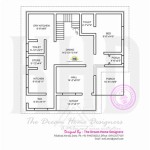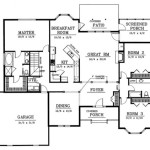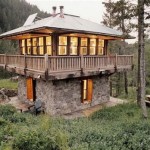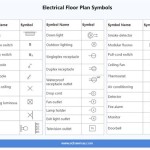Roman House Plans: An Architectural Overview
Roman houses, while varying significantly in size and opulence, followed recognizable architectural patterns. Understanding these typical layouts offers insight into Roman society, values, and daily life. From the simple dwellings of the common people to the lavish villas of the elite, specific design elements defined the Roman home.
Key Features of Roman House Plans:
- Atrium: Central open-air space.
- Impluvium: Basin for collecting rainwater.
- Compluvium: Opening in the roof above the impluvium.
- Peristyle: Colonnaded garden or courtyard.
- Cubicula: Small bedrooms.
- Triclinium: Dining room.
- Tablinum: Reception room or office.
The atrium served as the heart of the Roman house. This central hall was partially open to the sky via the compluvium, allowing light and rainwater to enter. The rainwater collected in the impluvium below, providing a source of fresh water for the household. The atrium was a multipurpose space used for receiving guests, conducting business, and displaying family portraits and ancestral busts. Its central location emphasized the importance of family and social connections in Roman culture.
Variations in Atrium Design:
- Atrium Tuscanicum: Simplest form, with no supporting columns.
- Atrium Tetrastylum: Four columns supporting the roof around the impluvium.
- Atrium Corinthium: Larger compluvium with more elaborate column arrangements.
Wealthier families might also have a peristyle, a colonnaded garden, or courtyard, often located behind the atrium. This provided a private outdoor space for relaxation and contemplation. The peristyle often included fountains, statues, and elaborate landscaping, reflecting a connection to nature and the Roman appreciation for aesthetics.
The Peristyle Garden:
- Provided a private outdoor sanctuary.
- Featured decorative elements like fountains and statues.
- Offered space for leisurely activities.
Surrounding the atrium and peristyle were various rooms designed for specific functions. Cubicula served as bedrooms, typically small and sparsely furnished. The triclinium, or dining room, was an important space for social gatherings and meals. It featured couches arranged around a low table for reclining while dining, a custom adopted from the Greeks. The tablinum, located at the back of the atrium, often functioned as a reception room or office for the head of the household, further highlighting the importance of social and professional activities within the home.
Room Functions and Layout:
- Cubicula: Private sleeping quarters.
- Triclinium: Dining room for formal meals.
- Tablinum: Reception room or office.
- Culinary areas: Located towards the rear or side of the house.
- Latrina and bath: Sometimes included in more affluent homes.
Homes of less affluent Romans followed a simpler layout, often lacking a peristyle and with fewer rooms. These domus, as they were known, might consist of a single story structure centered around the atrium. In urban areas, insulae, multi-story apartment buildings, provided housing for the majority of the population. These apartment blocks typically lacked the amenities of the domus, reflecting the social stratification of Roman society.
Domus vs. Insulae:
- Domus: Single-family houses, ranging from modest to grand.
- Insulae: Multi-story apartment buildings for the urban masses.
- Differences in amenities reflected social class.
Roman house plans reflected not only the practicalities of daily living but also the social values and cultural ideals of the time. The emphasis on the atrium and the inclusion of spaces for entertaining guests demonstrate the importance of social networks and hospitality. The presence of decorative features like fountains, statues, and mosaics in wealthier homes reflects the Roman appreciation for art and beauty. Furthermore, the layout of the Roman house often reinforced the patriarchal structure of Roman society, with the paterfamilias, or head of the household, occupying the tablinum and controlling access to other areas of the home.
Reflections of Roman Society:
- Emphasis on social interaction and hospitality.
- Appreciation for art and aesthetics.
- Reinforcement of patriarchal family structures.
Studying Roman house plans provides a fascinating glimpse into the daily lives of people who lived centuries ago. These architectural layouts, with their distinct features and variations, reveal much about Roman society, values, and cultural practices.
The Significance of Roman House Plans:
- Offer insights into Roman daily life.
- Reveal social values and cultural practices.
- Demonstrate architectural ingenuity and adaptation to climate.

Roman Domestic Architecture Domus Article Khan Academy

Roman House

Plan Of A Pompeian House Roman Courtyard Plans Villa

Elegant Roman House With Atrium And

Pin By Rebecca Koch On Ancient Rome Roman Bath House Floor Plans

Plan Of Roman House Imperium Romanum

The Roman Domus World History Encyclopedia

The Evolution Of House Part 4

Roman Art And Architecture 4 Domestic
Plan And Elevation Of A Roman Villa Nypl Digital Collections








